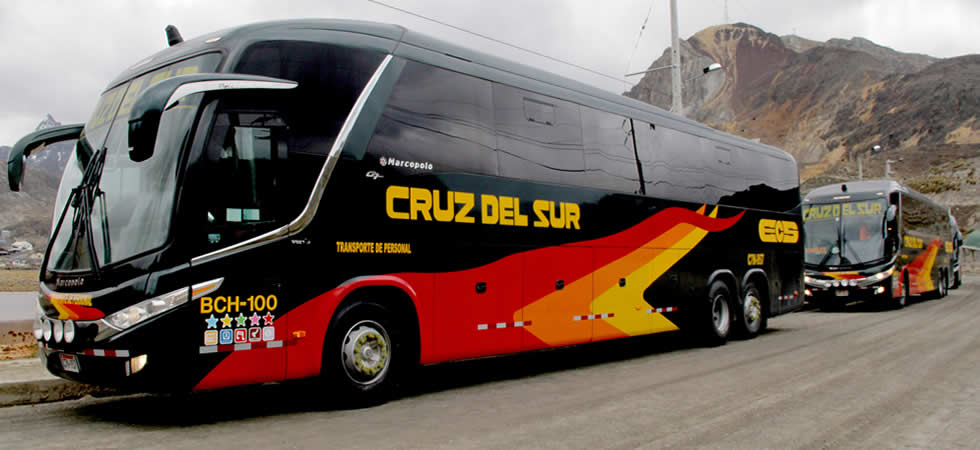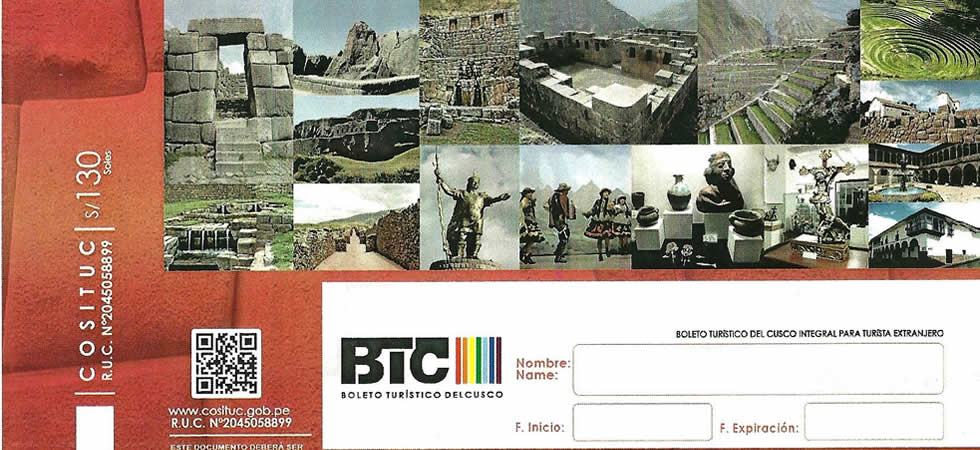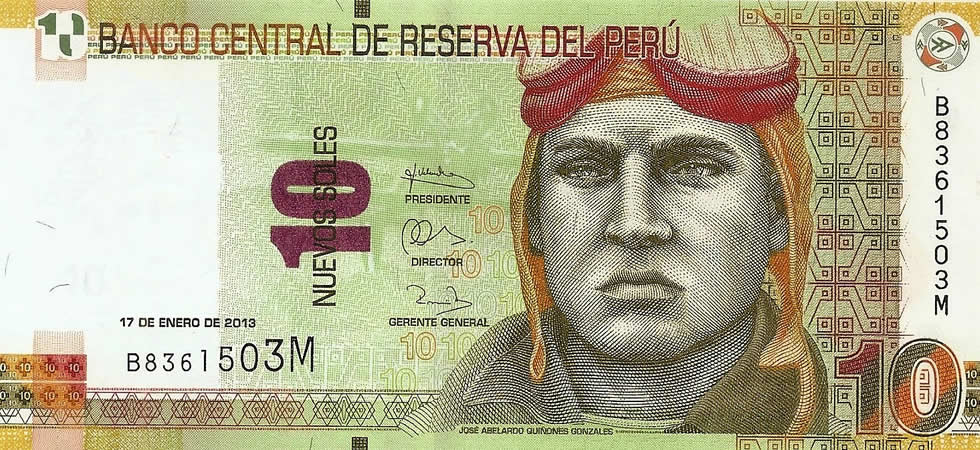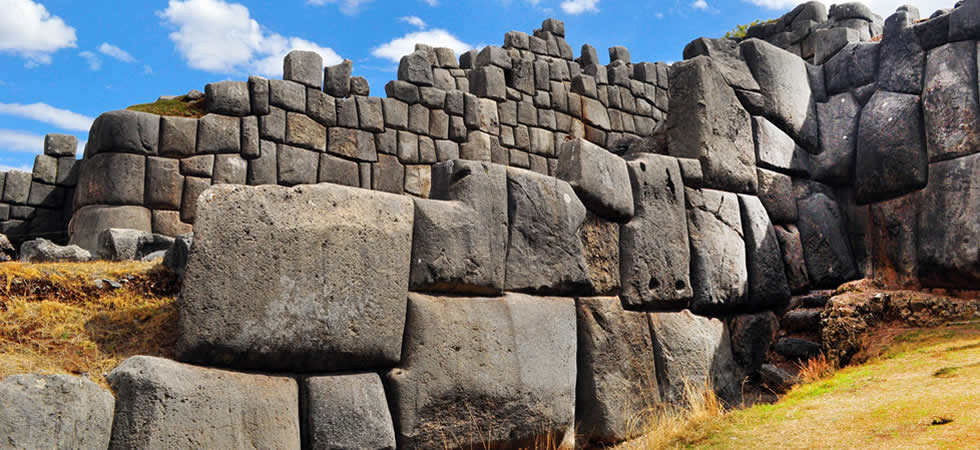Welcome to Cusco
Welcome to Cusco, the old capital of the Incas, nestled high in the Andes Mountains in Peru. Cusco is a fantastic city with friendly locals, culture and history, and endless opportunities for adventure & exploration. Cusco is the gateway to the Sacred Valley of the Incas and the Inca citadel Machu Picchu!
Whether you want to visit Cusco while traveling in Peru or looking for a place where you can spend more time, Cusco and its surroundings are the perfect destinations. This is your Cusco guide, full of tips and inspiration for what to do in Cusco and what to see in Cusco as you discover everything this stunning city offers.
How to get to Cusco
By plane
There are daily flights from Lima to Cusco. Most major airlines in Peru, such as LATAM, Star Peru, and Peruvian Airlines, operate flights between Lima and Cusco. The flight from Lima to Cusco usually takes around 1 hour and 20 minutes. Cusco’s airport is called Alejandro Velasco Astete International Airport and is located about 10km from the city center.
By bus
Several bus options are available for traveling from Lima to Cusco, Peru. The direct bus ride takes around 22 hours and is a great way to see the countryside and the Andean landscapes. However, the conditions of the roads could be better, and only a few travelers use this route. The second route goes via the Pan-American highway via Nazca and Arequipa. Buses from Lima to Cusco usually depart from the Terminal Terrestre (bus station) in Lima and arrive at the Terminal Terrestre in Cusco.
Several bus companies operate the route from Lima to Cusco such as Cruz del Sur and Ormeño. These companies offer different service levels, such as economy, semi-cama, and cama-suite (bed seats). Some provide meal service, and some offer Wi-Fi, toilets, and other services.

How to get to Cusco
Cusco Boleto Turistico
The Boleto Turístico (BTC), also known as the Cusco Tourist Ticket, is an entrance ticket that grants access to many of the most famous archaeological sites and museums in the Cusco region. The ticket is valid for ten consecutive days and grants access to the most important 16 different tourist sites.
The cost of the Boleto Turístico varies as they offer you different options. You need to see the most convenient option depending on your travel plans, how many sites you want to visit, and how long you will be in Cusco.
The different options are:
- Boleto Turístico General: grants access to all 16 sites. Price 130 Peruvian Soles (about USD 38). Duration: 10 days.
- Boleto Turístico Parcial: grants access to a limited number of sites and 70 Peruvian Soles (about USD 20).
In the case of the ‘boleto parcial’, you can choose different tickets:
- Cusco and nearby Ruins (Sacsayhuaman, Pucapucara, Qenqo, Tambomachay).
Duration: 1 day
- Museums Cusco and Valle Sur (Tipón, Picillacta). Duration: 2 days
- Sacred Valley (Pisac, Ollantaytambo, Chicheros, Moray).
Duration: 2 days
The Boleto Turistico can be purchased at the main entrance of each site or in the tourist office in Cusco at the Avda. del Sol 103. If you book a tour, your travel agency can also buy the ticket for you and include it in the tour price. The ticket is non-refundable and non-transferable.
Important notes
- While (most of) the ruins and sites in the Sacred Valley are included in the Boleto Turístico, the entry to Machu Picchu is not. You need to purchase a separate Machu Picchu ticket; keep in mind that access to Machu Picchu is limited by time slots, and booking in advance is advisable.
- The Cathedral and Qoricancha (Temple of the Sun) are separate from the tourist ticket too.
- The Boleto Turistico only grants access to the sites; transportation is not included.
If you want to visit the main tourist sites of Cusco you can either go their by yourself by public transport, taxi or walking when witin Cusco, or, you book a tour, like the Cusco City Tour, Sacred Valley Tour, Tour to Maras and Moray, Tour to the Valle Sur or Southern Valley, and more.

Cusco Boleto Turistico
Cusco Weather
The climate in Cusco is generally considered to be subtropical highland. The city is located in the Andes Mountains at an elevation of around 3,400 meters (11,200 feet) above sea level.
The temperature in Cusco generally varies throughout the year, with an average high of around 15°C (59°F) during the day and an average low of about 5°C (41°F) at night. The city can get quite cold in the evenings, especially during the winter months (June to August).
The city experiences two main seasons: the dry season, which runs from April to October, and the wet season, which runs from November to March. The dry season is the most popular time to visit Cusco, as the weather is generally sunny and dry, and the views of the surrounding mountains are clear. However, during the wet season, it can rain frequently and heavily, making it more difficult to visit some of the sites.
It is important to note that altitude can affect you during the first days; some people may experience altitude sickness. The symptoms can include headache, fatigue, and shortness of breath. Drinking plenty of water and acclimatizing to the altitude are recommended before engaging in any heavy physical activity. (See more below)
Cusco altitude sickness
Altitude sickness, also known as acute mountain sickness (AMS), is a condition that can occur when people travel to high elevations, such as Cusco, Peru. Remember, Cusco is located at an elevation of around 3,400 meters (11,200 feet) above sea level, which is higher than many other destinations and can cause altitude sickness in some individuals.
Symptoms of altitude sickness can include headache, fatigue, shortness of breath, nausea, and insomnia. There are several ways to help prevent or manage altitude sickness while traveling to Cusco:
- Acclimatization: it is recommended to spend a day or two in a lower altitude city before going to Cusco to give your body time to adjust to the change in elevation.
- Hydration: it's essential to drink plenty of water to help your body acclimatize to the altitude.
- Rest: it's recommended to take it easy for the first few days and avoid strenuous activity.
- Medicines: over-the-counter medications such as ibuprofen, acetazolamide (Diamox), and dexamethasone can help alleviate symptoms of altitude sickness.
Not everyone will experience altitude sickness, as some people are more susceptible to it than others. It's always a good idea to consult a healthcare professional before traveling to high elevations, especially if you have a pre-existing medical condition. If symptoms persist after a few days and you feel bad, you must go to a clinic in Cusco (maybe you need oxygen). In occasions, it's even necessary to descend to a lower altitude to avoid severe altitude sickness (this does not happen often).
Tap Water in Cusco
It is best to refrain from drinking tap water in Cusco due to the lack of proper treatment and sanitation. Instead, stick to bottled water, easily found at most stores and restaurants. Consider bringing a water filter or purification tablets as an alternative.
It's also important to be aware of the potential for water-borne illnesses such as Giardia and Cryptosporidium, which can cause diarrhea and other intestinal problems.
Remember that the altitude in Cusco can make you dehydrate faster, so it's vital to stay hydrated by drinking plenty of water and avoiding drinks that can dehydrate you, such as alcohol.
Internet in Cusco
The internet access in Cusco is generally good. Still, it may not be as reliable or fast as in other major cities. There are several internet service providers (ISPs) in Cusco and the quality and availability of service can vary depending on location in the town.
In general, most hotels and hostels in Cusco offer free Wi-Fi to their guests, and so do many cafes and restaurants. The internet speed can vary, but it's generally fast enough to browse the web, check email and use social media.
Keep in mind that the internet connection may be weak or even unavailable in some remote areas. You can buy a prepaid sim card with internet data that will allow you to use the internet on your phone or tablet during your trip.
Expats and Digital Nomads
Cusco is a popular destination for expats and digital nomads due to its rich culture, beautiful scenery, and relatively low cost of living. Many expats and digital nomads are attracted to Cusco for its proximity to Machu Picchu, the Sacred Valley, and other nearby archaeological sites.
Expats and digital nomads in Cusco tend to be diverse, including retirees, entrepreneurs, and people working remotely for companies based in other countries. They find affordable accommodation throughout the city, but many tend to congregate in specific neighborhoods, such as San Blas, known for its colonial architecture, central location, and bohemian vibe. Many others have settled in the Sacred Valley, in villages such as Pisac, Urubamba, and Ollantaytambo.
The community of expats and digital nomads in Cusco is relatively small but growing. There are several online communities and groups, such as Facebook groups, where expats and digital nomads connect and share information about living in Cusco.
The cost of living in Cusco is relatively low compared to many Latin American cities – even compared to Peru’s capital, Lima - and Cusco has a good infrastructure and many amenities. However, for some people, the altitude and the somehow unpredictable (chilly) weather are reasons not to stay longer in Cusco; also, during the peak tourist season, the city can get crowded.
But overall, Cusco is a popular destination for expats and digital nomads due to its rich culture and history, beautiful scenery with plenty of outdoor opportunities, and relatively low cost of living. Cusco is also a great place to study Spanish at a very low cost compared to Spanish schools in other Latin American countries.
Money in Cusco
The currency in Peru is the Nuevo Sol (PEN). Credit and debit cards are accepted in Cusco, especially in hotels, restaurants, and shops catering to tourists. However, it's a good idea to carry some cash on you as well, as some smaller businesses and markets may not accept credit or debit cards. Also, credit cards can be expensive to use.
ATMs are widely available in Cusco. Using ATMs inside banks or shopping centers is a good idea, as they are less likely to be tampered with. Some ATMs have a withdrawal limit of around S/2000 per transaction, while others may have a lower limit.
It's important to note that not all ATMs accept all types of cards, so better check with your bank or credit card Company to see which ATMs will work with your card. When traveling to Cusco, we recommend having a mix of cash and credit/debit cards.
The exchange rate varies per day. If you have cash US you want to change to soles, it is better not to go to a bank but to a Casa de Cambio. There are also people in the streets offering money exchange services, but the risk of receiving fake money is higher.

Peruvian Soles Money
Safety in Cusco
Cusco is generally considered a safe destination for travelers. Still, it's important to take the same precautions you would take in any other city. Tourist areas such as the city center and popular tourist attractions tend to be well-policed and safe, but it's always a good idea to be aware of your surroundings and take steps to protect yourself and your belongings.
As in any tourist destination, pickpocketing and theft can be an issue in Cusco, especially in crowded areas such as markets and bus stations. Therefore, keep valuables (passports, wallets, cameras, mobile phones) safe and be mindful of your belongings when in crowded areas.
It's best not to walk alone on the streets late at night, especially not in the dark, abandoned alleys. It's also recommended to use registered taxis (or Uber) and not hail a cab on the streets.
If you need help, you can contact the Tourist Police (POLTUR), who speaks both Spanish and English, and they can assist you with any issues you may have.
Cusco in Inca Times
Cusco was the capital of the Incan Empire during the 15th and 16th centuries. The Incas, who were known for their advanced architectural, engineering, and agricultural skills, built a vast network of roads, fortresses, and temples throughout the region. Cusco was at the center of this network and was considered the religious and administrative center of the entire empire.
Cusco also was an important center of trade and commerce, as it was situated on the main road that connected the empire's capital with other major cities and regions. The Incas built many impressive structures in Cusco, including the fortress of Sacsayhuaman, the Temple of the Sun, and the Palace of the Inca Roca. The Incas also built a complex system of canals and terraces to control and channel water for irrigation, which allowed them to grow crops in high altitudes and arid conditions. This allowed them to sustain a large population and build a powerful empire.
The Incas had a complex social and political system, and Cusco was also the center of their religious and spiritual beliefs. The city was considered to be the navel of the world (Cusco in Quechua means: navel).
The arrival of the Spanish conquerors in the 16th century marked the end of the Inca Empire, and many of the impressive structures that the Incas built in Cusco were destroyed or dismantled to build new structures. Fortunately, many of these structures still remain today and are major tourist attractions, including the famous Machu Picchu.

Sacsahuaman Cusco in Inca Times
Cusco packing list
When packing for a trip to Cusco, Peru, it's important to consider the city's high altitude and variable weather conditions. You also need to consider the other cities and regions you will visit during your trip to Peru. Packing for the coastal region or for the Amazon is very different than for the Andean highland (where Cusco is located).
Of course, your packing list also depends on what you plan to do: tourism, hiking or spend a longer period of time.
Packing List
- Warm clothing: Cusco can be quite chilly, especially in the evenings and early mornings, so it's important to pack warm clothing such as a jacket, sweater, and long pants. The best way to dress in Cusco is in layers.
- Rain gear: Rainy season is from November to April, so it's a good idea to pack a rain jacket or poncho and umbrella.
- Comfortable walking shoes: Cusco is a city of hills and cobblestone streets, so it's important to pack comfortable walking shoes.
- Sunscreen and sunglasses: The sun is strong in Cusco due to the high altitude, so it's important to protect your skin and eyes. For the same reason, you might want to use a cap or hat during some days.
- Insect repellent: There aren’t many mosquitoes (or other insects) in Cusco city, but you will see some during the rainy season and definitely in the Sacred Valley and Machu Picchu.
- Water bottle: It's important to stay hydrated, so bring a water bottle and refill it regularly.
- Personal medications: Be sure to pack any personal medications you may need, as well as a copy of your prescription.
- Travel documents: When packing for a trip to Cusco, Peru, it's important to consider the city's high altitude and variable weather conditions. You also need to consider the other cities and regions you will visit during your trip to Peru. Packing for the coastal region or for the Amazon is very different than for the Andean highland (where Cusco is located).
Of course, your packing list also depends on what you plan to do: tourism, hiking, or spending a longer period of time.
Packing List
- Warm clothing: Cusco can be quite chilly, especially in the evenings and early mornings, so it's important to pack warm clothing such as a jacket, sweater, and long pants. The best way to dress in Cusco is in layers.
- Rain gear: Rainy season is from November to April, so it's a good idea to pack a rain jacket or poncho and umbrella.
- Comfortable walking shoes: Cusco is a city of hills and cobblestone streets, so it's important to pack comfortable walking shoes.
- Sunscreen and sunglasses: The sun is strong in Cusco due to the high altitude, so it's important to protect your skin and eyes. For the same reason, you might want to wear a cap or hat on some days.
- Insect repellent: There aren't many mosquitoes (or other insects) in Cusco city, but you will see some during the rainy season and definitely in the Sacred Valley and Machu Picchu.
- Water bottle: It's important to stay hydrated, so bring a water bottle and refill it regularly.
- Personal medications: Be sure to pack any personal medications you may need, as well as a copy of your prescription.
- Travel documents: Passport, visa, travel insurance papers, and other necessary documents.
- Cash and credit cards: Cusco is a relatively safe destination, but it's always a good idea to have some cash and credit cards on hand.
- Passport, visa, travel insurance papers, and other necessary documents.
- Cash and credit cards: Cusco is a relatively safe destination, but it's always a good idea to have some cash and credit cards on hand.
- First-aid kit.
Remember that you can buy many things in Cusco, but that (especially) luxury articles, electronic devices, and brand clothes/ shoes/ articles will be more expensive than back home (if available at all) and probably of inferior quality too.
Public holidays in Cusco
Cusco has several official public holidays throughout the year. Some of the most notable holidays in Cusco include:
- New Year's Day (January 1st)
- Epiphany (January 6th or Three Kings: celebrates the arrival of the Magi to visit Jesus.
- Carnival (February/March)
- Easter Week (April) or Semana Santa
- Labor Day (May 1st)
- Corpus Christi (May or June): a Catholic festival around the Eucharist. In Cusco, it is celebrated with processions with ten saints and five virgins who then remain in the cathedral for eight days.
- Inti Raymi (June 24th), the Festival of the Sun, a traditional religious ceremony of the Inca Empire in honor of the god Inti (Quechua for "sun").
- Independence Day (July 28th): celebrating Peru's independence from Spain in 1821.
- Christmas Day (December 25th)
It's important to note that some of these holidays, like Easter week, Corpus Christi, and Carnival, have variable dates depending on the religious calendar. Also, some holidays like Inti Raymi (June 24th) are regional and very significant in Cusco. During those holidays, some businesses and government offices may be closed.